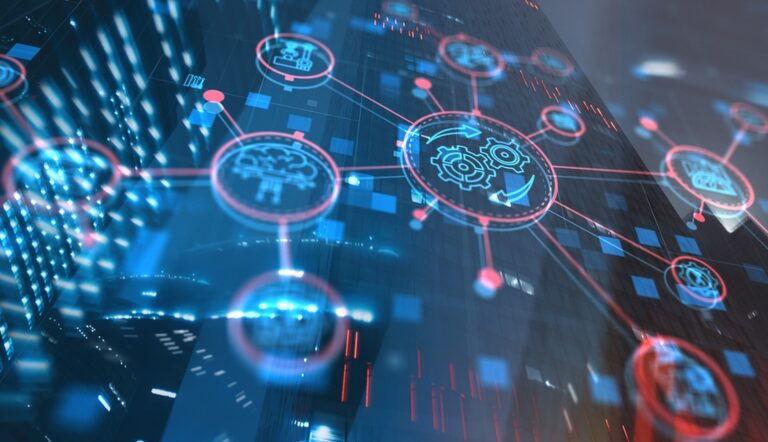As I write this from my hotel in Germany, 2009 is behind us. I don’t need to inform anyone of the economic crisis our country has experienced over the last several quarters. Our economic meltdown has impacted almost everyone, regardless of industry. The retail industry, however, was hit especially hard (specialty retail, apparel and footwear retailers), and numerous retailers were forced to close stores in order to reduce cost and diminish operating losses.
Since retail sales impact manufacturers and distributors upstream in the chain, let’s look ahead to this year. There are two questions to ask: Is the retail industry back on the right track and what can retailers do differently to ensure success?
I will attempt to answer these questions using a number of key retail statistics. As examples, I have selected companies where I have a personal interest in the company (they are an enVista client or I use their goods and services). Two key public retail company indicators of success are comp sales and annual stock price percentage change. Same store sales reveal the strength and growth or weakness and retraction of a retail chain. Stock price is how much one is willing to pay for one share based upon the company’s performance and should not to be confused with stock value.
When evaluating the data in the table below I believe these retailers are on the right track to recovery. The majority of 2008 and 2009 have been dismal for retailers and buyers have lost confidence in the economy due to uncertainty about their own economic fate. However, the comp sales figures for these companies are improving compared to 2008 (although, there are really only two directions they could go – up or bankrupt). If you look at the stock price percentage change last year, all of the companies have made significant improvement. (Unfortunately, I did not invest in Nordstrom on December 31, 2009. They produced a return of 182% – not bad!). However, a key static is a two-year return. Had you invested in these companies two years prior on December 31, 2007, your return on investment would have been less than stellar.
| Company | Annual Comp Sales (7/08 – 7/09) | Oct 09 Comp Sales | Nov 09 Comp Sales | Dec 09 Comp Sales | Stock Price % Change 12/31/08 – 12/31/09 (1 Year) | Stock % Change 12/31/07 – 12/31/09 (2 Year) |
| Costco | – 2.0 % | + 4.0 % | 0.0 % | + 2.0 % | + 15.24 % | – 13.27 % |
| Gap | – 9.7 % | – 4.0 % | – 6.0 % | + 1.0 % | + 56.46 % | – 1.50 % |
| Nordstrom | – 6.9 % | + 6.5 % | + 2.2 % | + 7.4 % | + 182.34 % | + 2.30 % |
| Walgreens | + 2.0 % | + 4.9 % | + 3.9 % | +.3 % | + 48.84 % | – 1.31 % |
Source: Yahoo Finance and retailindustry.about.com
Why do some retailers outperform others and what do underperforming retailers need to do change their fortunes?
Obviously, all retailers need to have great merchandise that we as consumers want to buy. However, retailers that excel in 2010 and beyond will focus on 1) customer service and satisfaction, 2) integrated technology platforms that allow for exceeding customer expectations and exceptional customer service, 3) integrated applications on one data model that allow improved work flows from point of sale, replenishment, merchandise planning and allocation, and 4) retailers must be relentless about cost containment (inventory working capital and operating expenses).

12 Dirty Little Secrets Retailers and Manufacturers Need to Know About Inventory Optimization
Get the low-down on the secrets retailers and manufacturers need to know about inventory optimization.
Let’s look at each of these points:
- Customer Service includes activities and actions that an accountable retail organization is required to perform in order to enhance the level of customer satisfaction. Customer service and satisfaction are not the same. Customer satisfaction is the feeling that a product or service has met the customer’s expectation.
Nordstrom and Walgreens understand customer service and hence deliver great customer satisfaction. What makes these two companies unique is that they go beyond the basics of customer service.
The Nordstrom name is synonymous with customer service, it is engrained into their culture which is aligned with their company’s business objectives. Nordstrom makes you feel good about buying their merchandise. When you buy an item from Nordstrom, the sales person will walk around the sales counter, hand you your purchase and shake your hand. That is customer service. Some have argued that the quality and level of customer service has decreased in recent years, and that this can be attributed to a lack of support or understanding at the executive and middle management levels of a corporation and/or a customer service policy. In the case of Nordstrom, I believe their executives realize that the customer service is a key competitive differentiator and one of their main business priorities. - Retailers need to understand that an integrated technology platform is also one of the keys to improved customer service. I personally believe that Walgreens has used their integrated technology to improve customer service, specifically in the area of pharmacy management.
I recently experienced how Walgreens has integrated technology and applications to improve the flow of information and data from patient, doctor, pharmacist, retail store and health care provider. My wife, Julie, needed medication that required a doctor’s prescription. From the time my wife called the doctor (on a holiday), to the time I picked up her medication was less than 1 ½ hours. Walgreens has used a superior technology stack and platform to connect and manage data information and make things easier for their customers. For example, their integrated technologies surrounding pharmacy cases are proactive as they called us when my wife’s prescription was ready. Due to the positive experience, I purchased $50 worth of staple merchandise while picking up my wife’s prescription… unplanned sales revenue due to a great customer experience.
Walgreens understands the importance of customer service and satisfaction and uses technology to differentiate themselves from their competitors. Customer satisfaction provides an indication of how successful the organization is at providing products and/or services to the marketplace. Have you polled your customers to see how satisfied they are with your company? - Retailers need to replace their disparate legacy applications which typically run on a multitude of databases and technology stacks (platforms and operating systems) and implement an integrated application which utilizes the same data model and framework. Why? Because as a retailer your core application suite is required to support a synchronized flow of inventory to meet variable demand. Does this mean that every application requires the same data model and systems architecture? No, but if you are a multi-channel retailer, some functions such as: demand planning, forecasting, purchase planning, purchase execution, merchandise planning and allocation, store replenishment, POS and visibility should all be on the same data model and architecture.
I am an advocate of running a retail company’s core solutions on the same data model for the following reasons: improved flow of information and data across functional departments. The improved information flow increases transparency and improves organizational accountability. There is reduced total cost of ownership with one core solution versus multiple applications. The core solution must provide the retailer the ability to be agile and flexible to meet customer demands through the use of SOA and end user configuration. Unfortunately, Microsoft Excel is by far the leading application used by small and mid-size retailers to manage their company’s work flow.
You may be thinking this is contrary to the common belief that Best of Breed (BOB) solutions provide increased flexibility and agility. Retail technology providers are using SOA to extend their applications allowing non-developers to make rapid changes. Manhattan Associates, BlueYonder (formerly JDA) and Microsoft understand the need to run core retail systems on one technology platform and data model. However Microsoft’s recent acquisition of LS Retail has taken it beyond just core retail flow and now they have one common data model that runs the entire Retail Enterprise (MS AX and Navision). Microsoft’s only gap is in the area of warehouse management system. However Manhattan Associates SCALE (ILS.NET) is completely integrated with Microsoft’s AX platform and provides a powerful combination for that medium size retailer with both push and pull replenishment strategies.
From an overall sales process engineering effort, customer service plays an important role in an organization’s ability to generate income and revenue. Retailers must at least keep up with the technology curve. In today’s fast-paced world where customers are more demanding and where social media has increased transparency, technology has become the core of what we do and who we are.
Customer service is normally an integral part of a company’s customer value proposition. In their book, Rules to Break and Laws to Follow, Don Peppers and Martha Rogers, Ph.D. write that “Customers have memories. They will remember you, whether you remember them or not.” They further say that, “Customer trust can be destroyed at once by a major service problem, or it can be undermined one day at a time, with a thousand small demonstrations of incompetence. - We are not out of the woods and some predict that our economy will not fully recover until 2011. In the meantime, retailers are required to focus on the bottom line and ensure that they are managing and reducing their working capital (inventory) and operating expenses.
The old cliché that retailers are required to get the right product to right place at the right price is still relevant. However, retailers in 2010 must also focus on getting the right product to the customer at the lowest total supply chain cost. Last year in one of my blog entries, What You Can do Now to Cut Costs in These Economic Times, I wrote the following: 1) the retailers that are surviving provide value through discount prices and, in most cases, exceptional customer service, and 2) the retailers that are surviving, and will continue to survive, are constantly seeking efficiencies in their supply chains. They are squeezing every penny from source to consumption. Wal-Mart’s entire business model is focused on cost containment, cost reduction or cost postponement. As I said last year and 2010 is no different, retailers require a relentless 24/7 and 365 days a year focus on COST. In 2010 retailers most also focus on ROIC (Return on Investment Capital). The wrong inventory, too much inventory and in the wrong place is not acceptable in today’s competitive retail environment.
Retailers and companies in general that are focused on customer service and investing in integrated technology in order to improve their customer’s experience will be the big winners in 2010. In addition, they will continue to develop tactical and strategic initiatives focused on enterprise cost and waste management.
To validate my point, Wal-Mart’s stock price has increased by 12.46% for the same two year period compared to the sample of retailers I listed above for the same period. As for the technology stocks, both Microsoft and Manhattan Associates’ stock prices are -16.87% and -9.68% for the same two year period (12/31/07 – 12/31/09); however, they have recovered significantly from stock price lows of 50% of their current price in the first quarter of 2009.
I believe all signs point that we are moving in the right direction; however, I predict that retailers focused on customer service and cost containment using an integrated technology strategy will survive and those that don’t.







